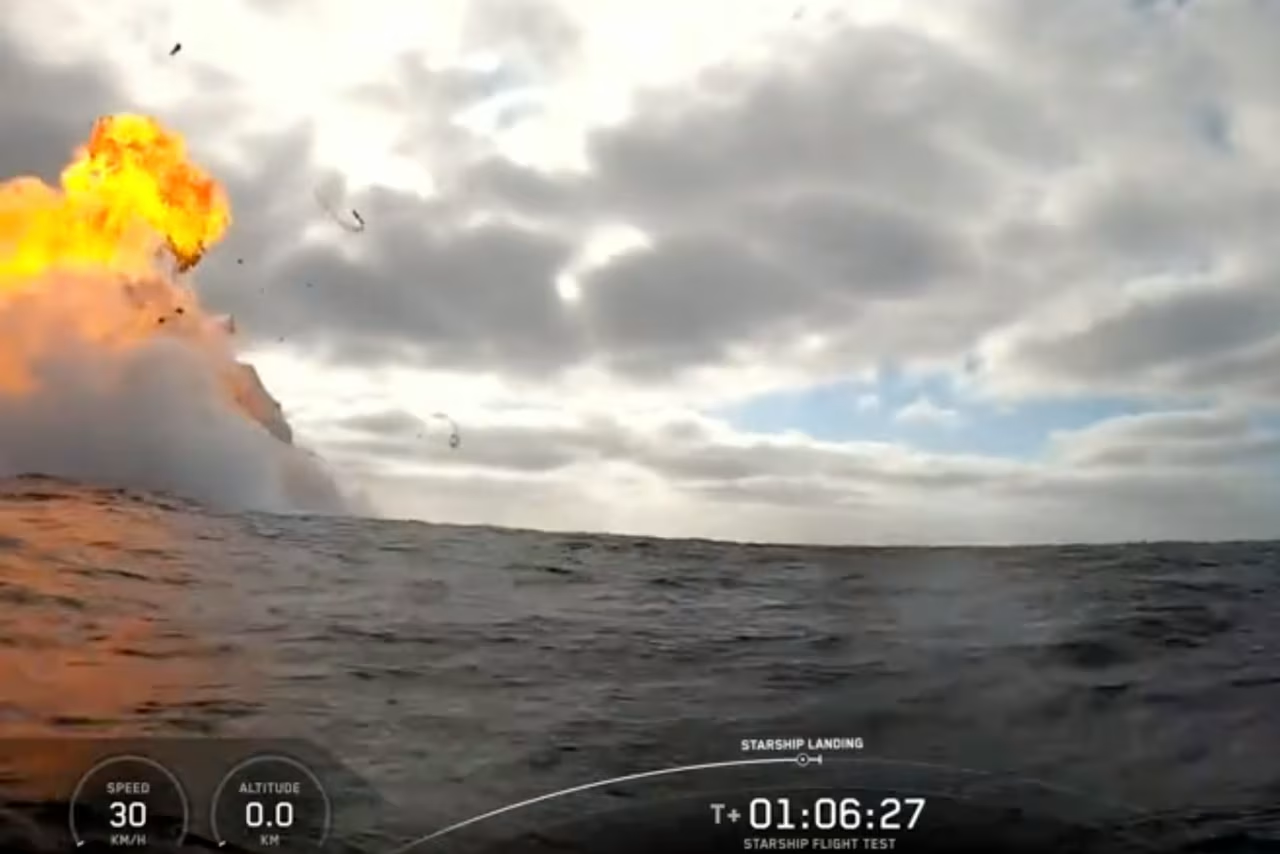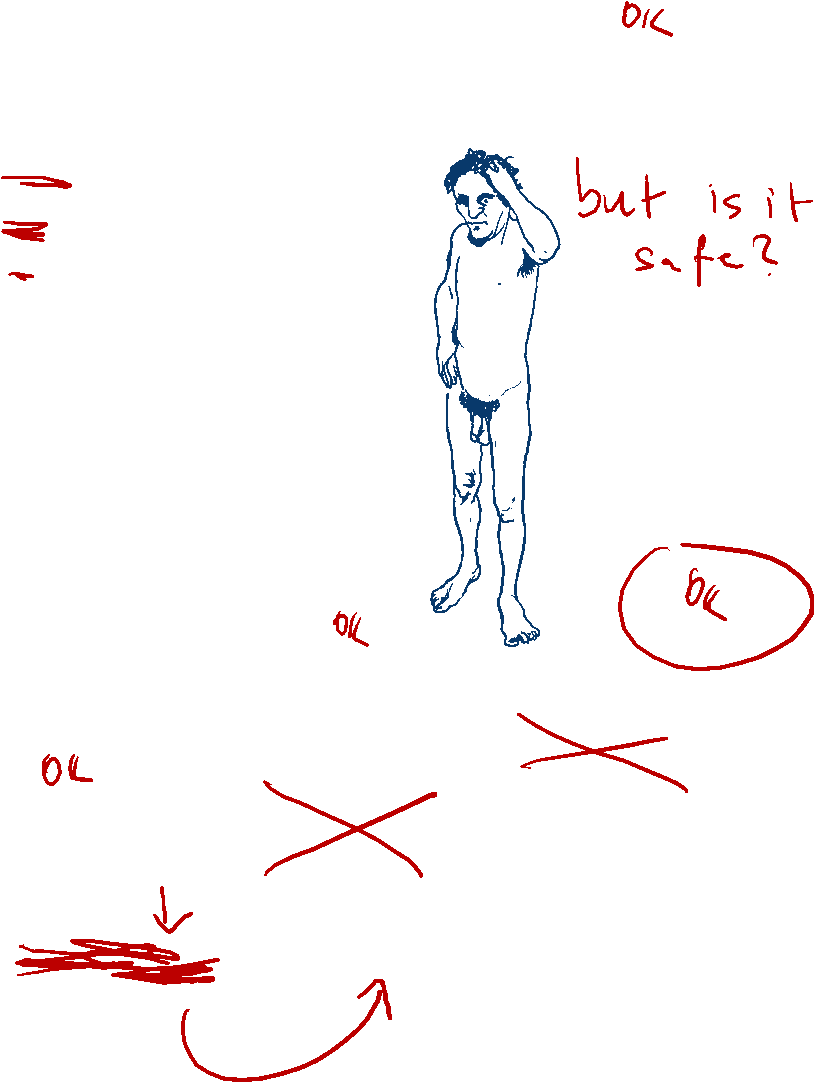What we're covering
• SpaceX’s Starship megarocket — the most powerful launch vehicle ever built — successfully completed an hour-long test flight.
• The company has had a rocky year of test missions with this generation of Starship prototype, called Version 2.
• This mission marks the second clean test run for Version 2, following a successful showing during its last test mission in August. Earlier this year, however, Starship Version 2 suffered three in-flight failures and an explosive accident during ground testing.
• SpaceX is racing to develop the vehicle to complete a moon landing for NASA, planned for 2027, amid a new space race.
• Today’s test mission is expected to be the last for the current iteration of Starship prototypes. The company has said it will debut a scaled up Version 3 for the next flight.
The acting NASA chief cheers Starship's "progress"
Acting NASA administrator Sean Duffy hailed today’s test flight as “another major step toward landing Americans on the Moon’s south pole.”
Duffy’s remarks come amid renewed skepticism that SpaceX’s Starship will be ready in time to deliver NASA astronauts to the moon during a mission planned for 2027.
After taking his post at NASA in July, Duffy — who is serving double duty as Trump’s Secretary of Transportation — has been among the loudest voices warning that the United States must beat China back to the lunar surface amid a new space race.
Starship nails its landing in the Indian Ocean

The Starship spacecraft — otherwise known as the “ship” — just made a fiery splashdown in the Indian Ocean.
SpaceX’s webcast hosts cheered the event, noting that the company was not expecting to recover the vehicle. And Starship did appear to smoothly tick through its final landing maneuvers — completing a series of tests SpaceX had mapped out.
This marks the second time that SpaceX has been able to reach such a milestone with Version 2, the series of Starship prototypes that the company introduced earlier this year. Version 2 Starships failed mid-flight on three missions in 2025. Only with the last test mission in August did the vehicle make a clean landing.
Figuring out how to get Starship safely back through Earth’s atmosphere intact and without losing contact is a big deal: SpaceX hopes to one day safely land the vehicle so it can be flown again.
SpaceX warns that Starship is being pushed "to the limit"

SpaceX’s Dan Huot just warned: “Do not be surprised if this is not a very smooth flight on the way down.”
He noted that SpaceX intentionally removed heat shield tiles at vulnerable parts of the Starship spacecraft. The idea here is to pinpoint exactly how and where the vehicle might fail — or if engineers will be surprised by Starship’s robustness.
While smooth flights are ideal, SpaceX is emphasizing that, because these are tests, engineers want to identify failure points as well. Such data can be useful because it informs workers of what can or should be added or subtracted from Starship — a key consideration when every ounce of hardware affects the overall efficiency of the vehicle.
Vibrant, glowing plasma appears on Starship's exterior
Starship is still cruising along at more than 16,000 miles per hour, but it’s beginning to dip back down into the thick inner band of Earth’s atmosphere.
The extreme pressure and friction compresses the air molecules in front of Starship, creating a glowing plasma that is the signature of the stretch of flight known as reentry.
Starship can heat up to more than 2,600 degrees Fahrenheit during this process.
Starship relights an engine in space
SpaceX just ticked off another big milestone for this mission: Successfully relighting one of the Starship spacecraft’s six engines mid-flight.
The whole thing is designed to simulate how Starship will conduct a deorbit burn, or a maneuver intended to steer the vehicle back toward dry land after it finishes its mission in space.
“This will be a critical capability,” SpaceX’s Dan Huot noted.
Unlike any other rocket that has ever flown, Starship is intended to be rapidly reused from top to bottom. That means SpaceX wants to bring both the Super Heavy rocket booster and Starship spacecraft safely home after flight.
And SpaceX is really figuring out how to do this from scratch. No other launch system is built quite like this: Starship essentially acts as both the second stage of a rocket and as its own spacecraft. Never has a rocket’s upper stage been safely returned from orbit, in part because the jarring physics of plunging back into Earth’s atmosphere while traveling more than 17,000 miles per hour can easily rip a vehicle apart if not meticulously planned.
SpaceX previously accomplished an engine relight test on Flight 6 in November 2024 and Flight 10 this past August.
Employees chant "USA" as satellite test ends

As the Starship prototype ejected its last dummy satellite during a payload deployment test, employees cheered loudly and began chanting “USA! USA!” in unison. It’s unclear why.
Earlier in the webcast, one of the hosts noted that — when Starship is operational — it will haul batches of about 60 Starlink satellites to orbit at a time.
“Starship will deploy Starlink’s more advanced V3 satellites, adding 60 terabits per second of capacity to the network per launch,” the SpaceX livestream host said. “So, that’s 20 times more than each Falcon 9 launch does today. Just incredible.”
SpaceX hopes that Starship will soon be able to take over satellite launches, replacing SpaceX’s Falcon 9 as the go-to vehicle for the job. Despite the fact that Falcon 9 is smaller and cheaper than Starship, according to SpaceX, Starship will be more efficient and boast a cheaper price per kilogram for hauling cargo to orbit.
Starship begins deploying mock satellites

The Starship spacecraft, soaring through space at near orbital speeds, just began a key test for today’s mission.
A large slat on the side of the vehicle — a hatch called a “payload door” — opened up and began spitting out fake satellites, marking the second time SpaceX has conducted such a test.
Unlike other rockets, which deploy satellites out of a nose cone, Starship has a lateral door that must open up to allow the satellites to eject into space.
The mock satellites are meant to simulate SpaceX’s latest version of Starlink internet-beaming satellites. (And the dummy satellites on board Starship today will not enter orbit. They’ll fall back to Earth because Starship itself is on a suborbital trajectory for this test mission.)
Starship is cruising along as planned

While the Super Heavy rocket booster has finished its job, the Starship spacecraft is now soaring through space, traveling more than 16,000 miles per hour.
“Nominal orbit insertion,” called out one SpaceX engineer from mission control. That means everything is going according to plan, and the Starship’s six engines performed as expected during a six-minute burn.
Starship is expected to continue coasting through space as it runs through a few tests before splashing down in the Indian Ocean about one hour post liftoff.
Super Heavy rocket booster hits its mark
The Super Heavy rocket booster just met its watery demise, landing in the Gulf waters just east of SpaceX’s launch facilities.
SpaceX did not expect to safely land or recover the Super Heavy during this test mission, as the company is stress testing the rocket and trying out some complex maneuvers that engineers hope will offer useful data on how to handle future versions of the vehicle more efficiently.
Despite testing the limits, Super Heavy hit its mark and appeared to perform well — or, at least, did not crash-land or explode.
“So far so good for today — that was incredible,” said Jake Berkowitz, a lead propulsion engineer for SpaceX’s Starship rocket engines.
Cheers from employees erupted during SpaceX’s live coverage of the moment.
Starship fires away from the Super Heavy booster
The Starship spacecraft and Super Heavy rocket booster just made it through a crucial moment in the mission: stage separation.
That’s when Super Heavy shuts down most of its engines in a moment called “main engine cutoff,” or MECO, as the rocket booster has now burned through most of its fuel.
Starship then ignited its own engines and thrust itself away from the Super Heavy booster in a maneuver SpaceX calls “hot staging.”
Hot staging essentially uses the thrust of Starship’s engines to push it away from the Super Heavy, rather than using a more delicate mechanism such as pneumatic thrusters.
Starship hits the critical "Max Q" milestone
The Starship spacecraft and Super Heavy booster reached Max Q, or the point of maximum dynamic pressure during a rocket launch.
Essentially, it means the vehicle is still traveling really fast when the atmosphere is very thick, putting the highest strain on the spacecraft. Safely passing through the Max Q milestone is always a key point in any spaceflight mission.
Liftoff!
The Super Heavy rocket booster, which sits beneath the Starship spacecraft, just ignited its 33 engines and began roaring toward space.
The booster will fire for two and a half minutes before the upper Starship spacecraft ignites its own six engines and breaks away.
All those rocket engines put off about as much thrust as 64 Boeing 747 jets, according to SpaceX.
Starship is by far the most powerful rocket ever constructed, boasting more than twice the thrust of NASA’s Saturn V rocket that powered the Apollo moon landings.
SpaceX will once again attempt to deploy "dummy" satellites
One of the most interesting goals SpaceX has planned for today’s test flight: an attempt to deploy eight satellite “simulators” from the Starship spacecraft.
If successful, it’ll mark the second time SpaceX has tried out such a maneuver, which is intended to help hash out how Starship will one day haul massive batches of Starlink satellites to orbit for SpaceX’s space-based internet business.
SpaceX said the satellite simulators used on today’s flight will be “similar in size” to the company’s next generation of Starlink internet satellites, helping the company to hash out how Starship may take over launch tasks from Falcon 9, SpaceX’s workhorse rockets.
Because Starship is not equipped with a nose cone, or payload fairing, as most other rockets are, the satellites will need to be ejected from a special hatch.
But this is all just a test.
The satellite simulators will not stay in space. Instead, they’ll travel on a suborbital path, much like the Starship spacecraft itself, which is slated to splash down in the Indian Ocean about one hour after takeoff.
SpaceX has now launched 300-plus batches of Starlink internet satellites
SpaceX’s Tyler Lionquist just gave a brief update on the company’s big money driver: Starlink, a network of internet-beaming satellites that whirl around in low-Earth orbit.
Just a few years ago, SpaceX detractors were openly questioning whether the network — which works differently from more traditional space-based internet services that make use of satellites flying thousands of miles farther out in space — would even work.
Now, it’s clear Starlink will be a huge source of income for SpaceX for years to come.
The service has more than 7 million customers at this time, Lionquist noted. And the company has now launched more than 300 batches of the satellites on its Falcon rockets, which are far smaller than Starship but launch frequently from Florida and California. Each batch consists of a few dozen satellites.
SpaceX has nearly 8,600 active Starlink satellites in orbit, according to data aggregated by Jonathan McDowell, an astrophysicist with the Harvard Smithsonian Center for Astrophysics.
Elon Musk makes an accidental livestream appearance

SpaceX CEO Elon Musk just popped into the livestream — perhaps by accident.
Musk popped into frame with his arms splayed, asking how the webcast was going.
The webcast hosts appeared to be surprised by his sudden arrival, and when they told Musk they were live in the moment, Musk replied “no way!”
He added that he’d be watching the launch from outside.
SpaceX will push the Super Heavy booster to its limits
SpaceX has wowed audiences during a few prior test flights by steering the Super Heavy rocket booster — the 232-foot-tall (71-meter-tall) cylinder with all the massive engines that fire at liftoff — back to a pinpoint landing post-flight.
The recovery technique, accomplished for the first time exactly one year ago today, involves the Super Heavy splitting away from the upper Starship spacecraft after expending most of its fuel and guiding itself back toward the launch tower.
During three prior test flights, the maneuver has been a success — with SpaceX’s “Mechazilla” launch tower catching the booster mid-air with giant metal “chopsticks” arms as the vehicle uses its engines to slow its descent.
In fact, today, SpaceX is reusing one of the boosters it previously recaptured.
But the company won’t attempt to recover it again. And SpaceX actually hasn’t attempted a Mechazilla booster landing since March.
On its last two flights, the Super Heavy has either exploded or made a controlled landing in the Gulf. That’s in part because SpaceX is intentionally pushing the vehicle to its limits — trying out different and perhaps more efficient ways to guide the booster home.
Today, the goal is to gather crucial bits of data about how the company may land the booster in a scaled-up iteration of the Starship launch system, dubbed Version 3 or V3, that is set to debut next year.
For example, Super Heavy will use five instead of three engines during part of its descent burn today.
This test could help “add additional redundancy for spontaneous engine shutdowns,” SpaceX said in a statement.
The booster will then attempt a “full hover” above the water using three engines before dropping in, according to the statement.
Today's launch is the last for this Starbase launchpad
SpaceX’s sprawling South Texas facilities — which were recently incorporated into their own town by the name of Starbase, Texas — change rapidly.
Buildings stretching across thousands of square feet are built in mere months as outmoded infrastructure is rapidly replaced, epitomizing SpaceX’s ethos of moving fast and “iterating,” or quickly changing course when necessary.
Such is also the case for the launchpad that this Starship rocket will take off from tonight. The structure, often referred to as Mechazilla by SpaceXers because of its resemblance to a gigantic metal giant, will be retired in favor of a new, more robust launchpad nearby.
The tower is designed to fit the even larger version of Starship prototypes — called Version 3 — that SpaceX is expected to debut for the next test mission.
SpaceX is also constructing a Starship launch tower in Florida, though it’s still awaiting regulatory approval to make use of it.
Some Florida residents really don't want Starship in their backyard

SpaceX has truly eye-popping plans for Starship.
SpaceX CEO Elon Musk has even said that he hopes SpaceX will one day be launching its Starship megarocket as many as 10 to 24 times per day — or once an hour — as the company chases dreams like establishing a human settlement on Mars.
To hit that type of launch rate, SpaceX will need to expand Starship’s launch facilities outside of its current home base in Texas.
That’s why the company is already building a new launch site at NASA’s Kennedy Space Center in Florida.
But before SpaceX can attempt to launch its megarocket from the famed Space Coast, regulators need to give final approval. Last month, the Federal Aviation Administration asked for input from the Florida public on the matter. And a lot of locals aren’t happy.
Residents are concerned about the disruptive sonic booms associated with Starship flights — which can be as loud as gunshots and may cause minor damage to buildings. Others, including a nudist recreation group, are worried about local beach closures that may result from SpaceX’s launch rate.
“It would be a disaster,” one resident said during the hearing. “And the whole beach and everything would be closed. The turtles would be gone. So I presume from all this that the focus is on the money, the economics, and not on anything else.”
Roughly 25 people spoke during a two-hour virtual hearing about the plan on September 3. About 20 of those people expressed concerns or outright opposition.
SpaceX will reuse a Super Heavy rocket for this mission

SpaceX has so far safely landed Super Heavy rocket boosters after three of its 10 test flights. And the company is already taking steps toward beginning to reuse the rocket parts it recovers.
The ninth Starship test flight in May marked the first time the company reused a booster. And SpaceX will repeat the approach today, using the Super Heavy booster that flew during Flight 8 in March.
On this flight, 24 of the 33 engines that sit at the base of Super Heavy will be embarking on their second journey.
“Its primary test objective will be demonstrating a unique landing burn engine configuration planned to be used on the next generation Super Heavy,” SpaceX said of the booster in a statement.
SpaceX eventually hopes to rapidly reuse the entire Super Heavy booster — taking it from landing to launch as smoothly as an airplane between legs of a flight.
SpaceX is now loading Starship with fuel
SpaceX does not appear to be tracking any significant technical issues or other scenarios that could prohibit takeoff this evening.
Launch controllers just gave the green light to begin loading up the 400-foot-tall rocket and spacecraft system with fuel.
The vehicle can hold a combined total of 11 million pounds of propellant — which includes methane (the fuel) and oxygen (the oxidizer).
Both the methane and oxygen are kept at super-cold temperatures so they are loaded in liquid — or cryogenic — form.








